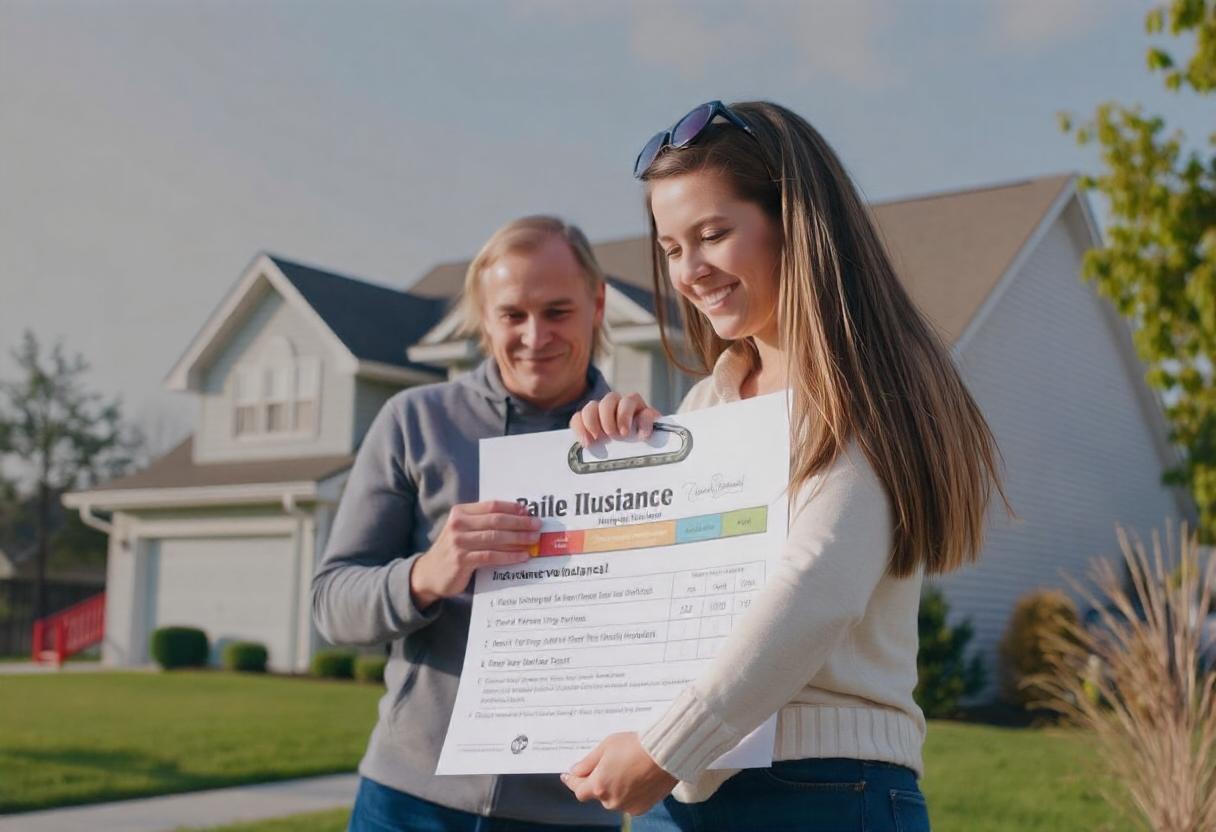Climate change, both as a global environmental issue and as an evolving threat to many businesses, including home insurance, requires the insurance industry to alter its approach in defending home sales across the country. With ever-increasing influence of the extreme weather events, sea levels and unpredictable climate changes, the insurance industry has to face an entirely new reality. Homeowners around the world risk being charged higher premiums, unprivileged strict terms, and even being refused coverage in high-risk areas. This article examines the link between climate change and home insurance rates, the fundamental drivers of that shift, and the long-term effects for homeowners as well as on the insurance industry.
Understanding Climate Change and Its Effects
Climate change refers to a long-term change in weather and temperature patterns which, in most cases, are blamed on human actions such as deforestation and burning of fossil fuels. These actions have increased the concentration of green house gases in the atmosphere, retaining heat and heating up the Earth’s climate. Climate change is universal, but its effects are region-specific, as these impact the weather and increase the chances of natural disasters such as hurricanes, wildfires, floods, and heat waves.
Increased Rate of Natural Disasters
Extreme climatic fluxes produce the most striking impact: increasing severity and frequency of natural disasters. Increasing severer extreme climatic conditions are causing increasingly frequent occurrences like hurricanes, wildfires, and floods, which in turn damage more houses and properties. NOAA reported that the United States has experienced the highest number of billion-dollar natural disasters in the last ten years, which will most probably continue to be the case.
Sea Level Increase
Another vital alteration caused by global warming is the rising sea due to melted polar ice caps and glaciers. Flooding and storm surges are phenomena that greatly occur in many coastal households where homes could be affected, and land could be lost. In addition to property damage, a rising sea level puts millions of people around the world at risk of displacement, with potential long-term economic and insurance consequences.
Shift in Climate Trends
Besides extreme weather conditions and climatic rise, other challenges arise from climatic changes. Places that were initially regarded as safe from other weathering situations may, therefore, be exposed to risks that they did not anticipate. For instance, areas that were previously known for their mild climate will now begin experiencing an uptrend of heat waves or droughts while other places start experiencing increased rainfall which leads to flash floods.
How Changes in the Climate Impact Home Insurance Premiums
Natural disasters as well as climate change pose setbacks to the insurance industry. This industry covers the dollar amount of losses that a homeowner suffers from the loss. As insurers face increasing costs in respect of claims covering damages brought about by environmental changes, the operators have to re-readjust their pricing models. Factors that contribute to an increase in the cost of home insurance driven by climate change
Increased risk of claims
The premium for insurance is based on risk. With increasing numbers of natural disasters in terms of frequency and intensity, that means there’s a higher probability that insurers will be called upon to pay claims on destroyed homes and property. That means more money in premiums because an insurer has to fund the cost of payouts on these claims going forward. Homeowners residing in hurricane-prone areas, wildfire zones, or flood plains are the most susceptible to high insurance rate increases.
Reinsurance Expenses
The most often ignored factor is the cost of reinsurance. The international insurance companies often buy reinsurance-a form of insurance sold to insurance providers to provide them with protection against massive payouts caused by disaster-causing situations. However, with the escalation of climate change exposure, the reinsurers also hike their premiums to ensure that they secure more payback for larger losses. These expenses are passed on to the home owners via higher premium payments.
Stricter Underwriting Guidelines
Insurers are growing more austere in underwriting policies as climate risks start to increase. That is to say that homes located in high-risk regions may receive more demanding terms on a policy, including higher deductibles, specific types of damage exclusion-for example, flooding or wildfire-or outright denial of coverage. For instance, some insurers have already made the decision to cease the sale of policies in areas where they believe there is a heightened risk of wildfires, such as parts of California. The option of coverage is inversely proportional to the higher the standard. As a result, insuring a home can be costly.
Cancellations and Non-Renewals
In extreme cases, insurers may cancel policies or deny renewals for homes in particularly high-risk areas. It has begun to manifest in wildfire-prone, flood-sensitive, or hurricane-ravaged regions. Homeowners who lose their insurance coverage may be driven to buy policies through niche, expensive insurers or government-backed programs, both of which are much pricier than classic home insurance.
Implication of Climate Change for Real Estate and Property Values
The impact of climate change is also portrayed in the real estate market. In climate prone areas, the houses may suffer from depreciable property values. This would make the landscape much more complicated relating to insurance coverage. For instance, one can think about a house whose value might be depressed by probable flood hazards. This means that the mortgage approval rates could become lower, or fewer people would avail more inexpensive insurance coverage. Another threat to insurers is lower property values, wherein the cost of rebuilding or repairing a home after a disaster might exceed its current market value.
Regional Impacts of Climate Change on Home Insurance Rates
Climatic change in the insurance rates of homes applies all over the world, while others are relatively more susceptible than the others. Different geographic regions have a unique form of climatic risk, and that plays a main role in determining how the insurance rates will be.
The Coastal Regions of Flood Risks
The coast areas are highly vulnerable to climatic change impacts. These are mainly from rising sea levels and increased occurrences of hurricanes and storm surges. Home owners in Florida, Louisiana, and the northeastern U.S. have certainly witnessed a huge surge in their home insurance payments more than any other region, particularly due to flood risks. In other coastal locations, the insurers may insist that home owners purchase separate policies on flood insurance, which can be costly.
These risks are countered by some government programs such as the National Flood Insurance Program, which exists in the U.S. In these programs, flood insurance is usually provided to homeowners. However, these government programs and schemes have often been found underfunded, often unsure of whether they will be able to increase with rising flood-related claims.
In these regions, homeowners are likely to face increased flood insurance premiums or be forced to carry out expensive home improvements to reduce the risk of floods.
Wildfire-Prone Regions
Areas vulnerable to wildfires, like California and some sections of the western United States, are also experiencing drastic surges in insurance premiums. Not surprisingly, insurers have been reviewing their risk models lately given the numerous devastating wildfires that have destroyed thousands of houses. Insurers either increase premiums dramatically or, in some cases, decline to renew policies for homes located in fire-prone regions, leaving a good number of homeowners vulnerable.
Other states have taken steps to reduce the dangers of wildfires to homes, such as stricter building codes and fuel reduction programs. Such steps may not be enough in keeping costs within limits when talking about insurance costs, though, as the increasing intensity of climate change-fueled wildfires reach higher levels.
Areas with Drought and Heatwave
Climate change has also ushered in extreme drought conditions and heat waves over many parts of the world, including parts of the southwestern U.S., parts of Australia, and southern Europe. Droughts can increase the risk of wildfires as well as cause structural damage from soil subsidence in homes. Long-term heatwaves will also exert pressure on local infrastructure, such as power grids, that may cause property damage due to power outages or fires. Such risks can lead to homeowners paying an insurance premium cost arising from exposure to these risks.
Long-term Consequences for Both Homeowners and Insurers
Such constant changes in the reality of weather patterns and natural hazards due to climate change have profound, long-term implications for both homeowners and the insurance industry. The threat to make homeownership a less realistic dream for so many lies in the new increased cost of insurance accompanying the risk of cancellation and non-renewal.
The Affordability Crisis
One of the most important long-term impacts of climate change on home insurance rates relates to affordability crises. While premiums are rising in a number of highrisk locations, homeowners will not be able to afford adequate coverage in many areas. Consequently, an increase in the number of uninsured or underinsured households will result in increased vulnerability to disasters and financial destruction of a given individual.
In this regard, some governments may even have to intervene by offering regulated, subsidized insurance programs or disaster relief funds. Again, these come at a great cost and would only partially handle the underlying risks as an aftermath of climate change.
Pressure on the Insurance Industry
These increasing costs tied to climate claims are also mounting pressure on the insurance industry. While insurers are still healing from the financial blows attributable to natural disasters, some may find it advantageous enough to withdraw from certain high-risk markets or make premiums unaffordable. This would only lead to further fragmentation of the insurance market, leaving homeowners in vulnerable regions with very few options.
More and more, climate risk modeling and catastrophe bonds have been of great interest to insurers as the best way to avoid significant losses. Still, if these risks continue to increase because they are associated with climate change, the industry could become motivated towards further innovation in order to be financially secure.
Technological Impact in Risks Prevention
Technological changes are really helping the homeowners and insurance companies to minimize risks due to climate change. In fact, building materials can be made fire-resistant; sensors that can alert of potential flooding in advance can be embedded; andautomated water shutdown during floods can be installed. Insurance providers give premium discounts to such ‘smart’ home applicants; thus, having fewer claims.
Additionally, more sophisticated climate risk modeling tools allow insurers to price the risk as well as to better evaluate risks more precisely. These tools tend to be based on historical data and rely on predictive analytics to discover which areas are at greatest risk and charge accordingly. As much as technology can mitigate those risk exposures, it can’t avoid the upward cost from the trend of climate change.


I’ve got my basic point very clearly ..
great info
great page
Very clear content
great work buddy
Clearly wording
awsome work
clearly wording
great knowledge you have great work
great work
Fabulous Artice ”’
great work
great content
level coontent
Well done Work
great work
good work
good work